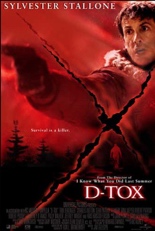
 Until the Rocky Balboa and Rambo reboots saved his career, the aughts were not a good time to be Sylvester Stallone. Arguably, his nadir would come with D-Tox, aka Eye See You, a $55 million film deemed so toxic, it opened on one screen in the United States: at a discount theater on the fringes of the Oklahoma City metropolitan area. I live there, and I have no idea why OKC was deigned the appropriate dumping ground. Hadn’t we suffered enough?
Until the Rocky Balboa and Rambo reboots saved his career, the aughts were not a good time to be Sylvester Stallone. Arguably, his nadir would come with D-Tox, aka Eye See You, a $55 million film deemed so toxic, it opened on one screen in the United States: at a discount theater on the fringes of the Oklahoma City metropolitan area. I live there, and I have no idea why OKC was deigned the appropriate dumping ground. Hadn’t we suffered enough?
Detective Jake Malloy (Stallone) can’t seem to crack the case of the Saw-voiced serial killer who’s on quite the cop-slaying streak and whose M.O. is a power drill to the eyeball through your front door’s peephole. While Malloy is at the murder scene of the mystery man’s latest badged victim, the killer is making it personal by going after Malloy’s fiancée (Dina Meyer, Johnny Mnemonic). The ensuing grief sends our Italian Stallion toward the bottle, then over the frickin’ edge: He slits his left wrist in a suicide attempt. (In subsequent scenes, however, his right wrist is bandaged — perhaps a sign how little the filmmakers cared.)
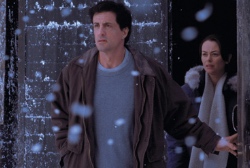 To kick the shakes and get his life back on track, Malloy is sent to a Very Special Rehab Facility; run by a grizzled ex-cop (Kris Kristofferson, Big Top Pee-wee), the former military complex caters only to cops and is located in what seems to be a perpetual blizzard. But no matter how remote the facility, Malloy is unable to escape his demons, because when his fellow residents start showing up murdered, it’s clear the killer has followed him there.
To kick the shakes and get his life back on track, Malloy is sent to a Very Special Rehab Facility; run by a grizzled ex-cop (Kris Kristofferson, Big Top Pee-wee), the former military complex caters only to cops and is located in what seems to be a perpetual blizzard. But no matter how remote the facility, Malloy is unable to escape his demons, because when his fellow residents start showing up murdered, it’s clear the killer has followed him there.
Okay, so maybe it’s only clear once our hero spots “ICU” written on the underside of a corpse’s eyelids.
The closest Stallone has gotten to making a horror film (at least intentionally), D-Tox marked the sophomore feature for Jim Gillespie, who lucked out and broke big when his debut, I Know What You Did Last Summer, rode the immediate wave of the pop-culture tsunami that was Wes Craven’s Scream. Slasher elements are in place, right atop the machinations of an old-fashioned whodunit in Agatha Christie’s patented one-by-one mode, but the work simply does not work. (Two years later, Renny Harlin’s Mindhunters would fare far better utilizing a similar setup.) It’s a shame, too, because Gillespie was gifted with a ridiculously strong supporting cast for this type of film, including Tom Berenger (Major League), Jeffrey Wright (Source Code), Stephen Lang (Don’t Breathe), Charles S. Dutton (Alien 3), Courtney B. Vance (Office Christmas Party), Polly Walker (John Carter) and Robert Patrick (The Marine). Curiously absent among that list: suspense. —Rod Lott

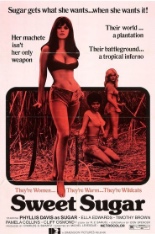
 Elation turns to frustration when a prostitute named Sugar is sentenced to the plantation, in the Cain-raising
Elation turns to frustration when a prostitute named Sugar is sentenced to the plantation, in the Cain-raising 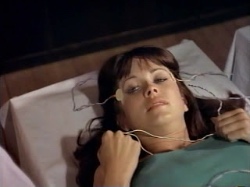
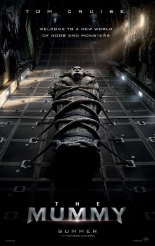
 Seeing green (with envy) at the massive success Marvel Studios has had with its
Seeing green (with envy) at the massive success Marvel Studios has had with its 

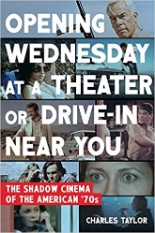
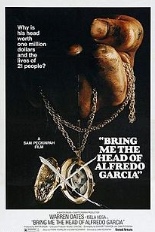

 Cameron Steele (Christopher George,
Cameron Steele (Christopher George, 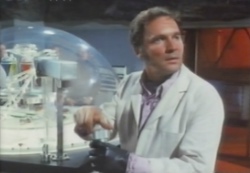 Charles is holding Henry captive, wishing to use his brother’s breakthrough for nefarious purposes. But the “why” is less important than the “where”: the Happyland amusement park! Yes, in order to spring Henry from captivity, Steele must navigate a funhouse laden with tricks and traps, which is where the telefilm lives up to the wonder promised by its way-out opening credits, scored by
Charles is holding Henry captive, wishing to use his brother’s breakthrough for nefarious purposes. But the “why” is less important than the “where”: the Happyland amusement park! Yes, in order to spring Henry from captivity, Steele must navigate a funhouse laden with tricks and traps, which is where the telefilm lives up to the wonder promised by its way-out opening credits, scored by